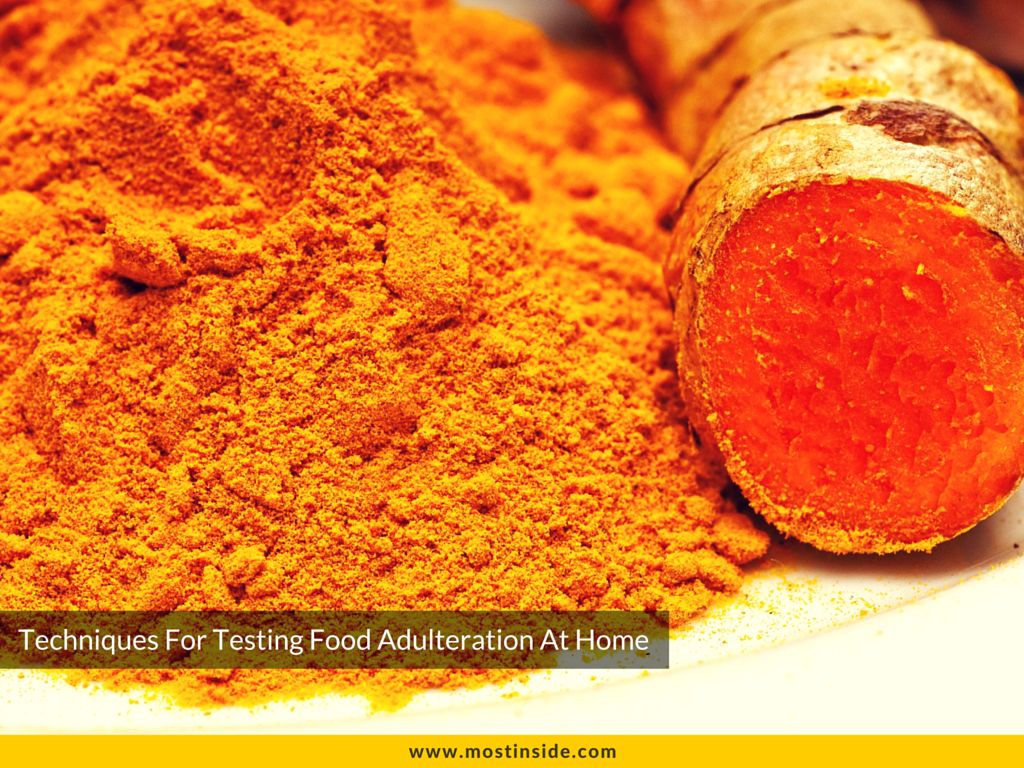Food is anything which is able to satisfy appetite, supplies energy and meet physiological needs for growth. So, it should be pure and nutritious.

These days quality of food is degrading. It is because every consumer wants to get maximum quantity of a commodity for as low a price as possible. This attitude of the consumer is being combined with the intention of the traders to increase the margin of profit, where the quality of the commodity gets reduced through addition of a baser substance and or removal of vital elements also commonly known as food adulteration.
Try these tricks to know the food is adulterated or not.
Green Vegetables
Adulterant: Malachite Green
Test: Take a small portion of the vegetable sample and place it over a moistened white blotting paper. If colored impressions are seen on the blotting paper, then it indicates the presence of Malachite green.
Ice Cream
Adulterant: Washing powder
Test: Squeeze a few drops of lemon juice on the ice cream. If it starts to froth and bubble, it indicates the presence of washing powder.
Black Pepper
Adulterant: Papaya seeds
Test: Put the seeds sample in alcohol. Black pepper seeds sink while papaya seeds float.
Coffee Powder
Adulterant: Chicory powder
Test: Take water in a glass. Gently sprinkle the coffee powder on the surface of water. Chicory will start to sink within a few seconds leaving a trail of color behind whereas coffee floats.
Mustard Seeds
Adulterant: Argemone seeds
Test: When crushed, mustard seeds are smooth on the outside and are yellow in the inside whereas argemone seeds have a rough outer surface and are white inside.
Sugar and Salt
Adulterant: Chalk
Test: Dissolve sugar/salt in a glass of water. The chalk settles down.
Honey
Adulterant: Water
Test: A cotton wick dipped in pure honey burns when ignited with a match stick. Presence of water will not allow the honey to burn, if it does will produce a cracking sound.
Tea Powder
Adulterant: Iron fillings, used tea, colored leaves
Test: Move a magnet through the tea powder sample. Iron fillings will be separated. Sprinkle the tea leaves on wet filter paper. Pink or red spots on paper show color. Rub leaves on white paper, artificial color comes out on paper.
Red chilli Powder
Adulterant: Brick powder
Test: Put red chilli powder in glass of water. Brick powder settles down to the bottom fast and chilli powder slowly.
Milk
Adulterant: Water
Test: Add few drops of lemon juice to milk sample. Pure milk curdles whereas adulterated milk does not and if the curdled milk is like rubbery lump, it indicates adulteration of milk.
Turmeric powder
Adulterant: Metanil Yellow
Test: Mix turmeric sample to water and add a few drops of HCL/commonly available acid at home. If it turns violet or purple color, it indicates presence of metanil yellow.
Moong dal, Channa Dal
Adulterant: Metanil Yellow
Test: Extract the color with luke warm water from the sample of pulses and add drops of HCl/commonly available acid at home. If it turns pink color, it indicates presence of metanil yellow.